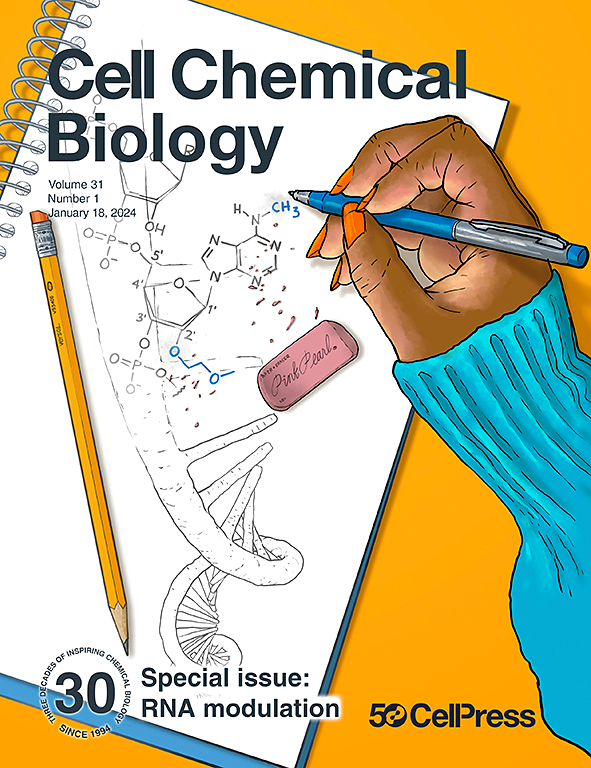Silencing stress: Structural insights into ISR termination by the SIFI ubiquitin ligase
IF 7.2
1区 生物学
Q1 BIOCHEMISTRY & MOLECULAR BIOLOGY
引用次数: 0
Abstract
The E3 ligase complex SIFI silences the integrated stress response (ISR) by targeting stress-induced proteins for degradation. In the May 6th issue of Nature, Yang et al.1 revealed how this megadalton complex recognizes diverse substrates and coordinates ubiquitin chain formation. Their insights into the ISR shutdown mechanism suggest new avenues for modulating stress responses in neurodegenerative disease.
沉默压力:SIFI泛素连接酶对ISR终止的结构见解
E3连接酶复合物SIFI通过靶向应激诱导蛋白降解来沉默综合应激反应(ISR)。在5月6日出版的《自然》杂志上,Yang等人1揭示了这个兆道尔顿复合物如何识别不同的底物并协调泛素链的形成。他们对ISR关闭机制的见解为调节神经退行性疾病的应激反应提供了新的途径。
本文章由计算机程序翻译,如有差异,请以英文原文为准。
求助全文
约1分钟内获得全文
求助全文
来源期刊

Cell Chemical Biology
Biochemistry, Genetics and Molecular Biology-Molecular Medicine
CiteScore
14.70
自引率
2.30%
发文量
143
期刊介绍:
Cell Chemical Biology, a Cell Press journal established in 1994 as Chemistry & Biology, focuses on publishing crucial advances in chemical biology research with broad appeal to our diverse community, spanning basic scientists to clinicians. Pioneering investigations at the chemistry-biology interface, the journal fosters collaboration between these disciplines. We encourage submissions providing significant conceptual advancements of broad interest across chemical, biological, clinical, and related fields. Particularly sought are articles utilizing chemical tools to perturb, visualize, and measure biological systems, offering unique insights into molecular mechanisms, disease biology, and therapeutics.
 求助内容:
求助内容: 应助结果提醒方式:
应助结果提醒方式:


